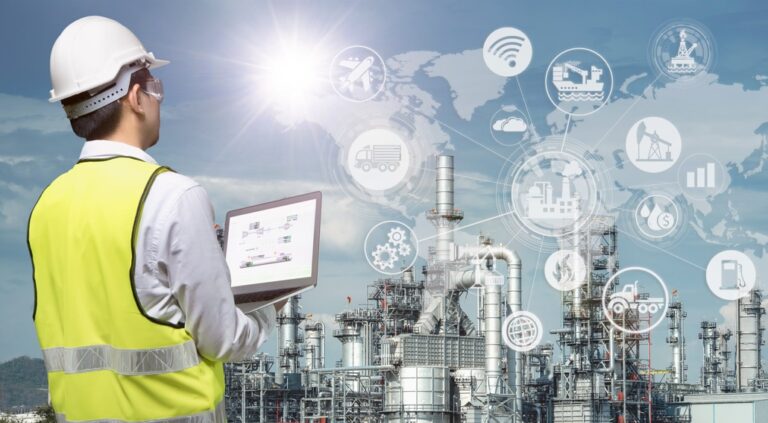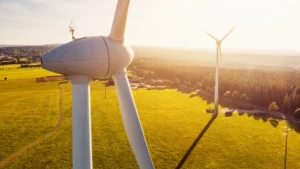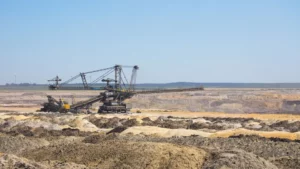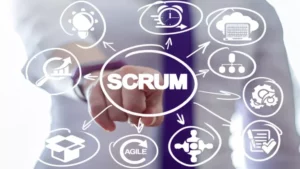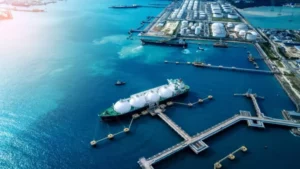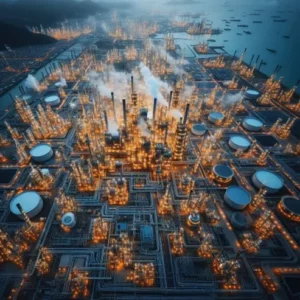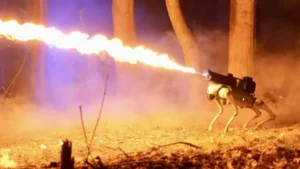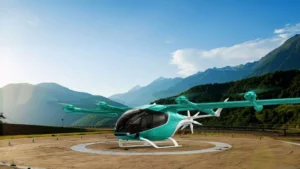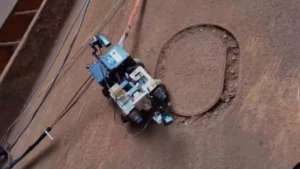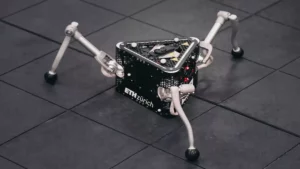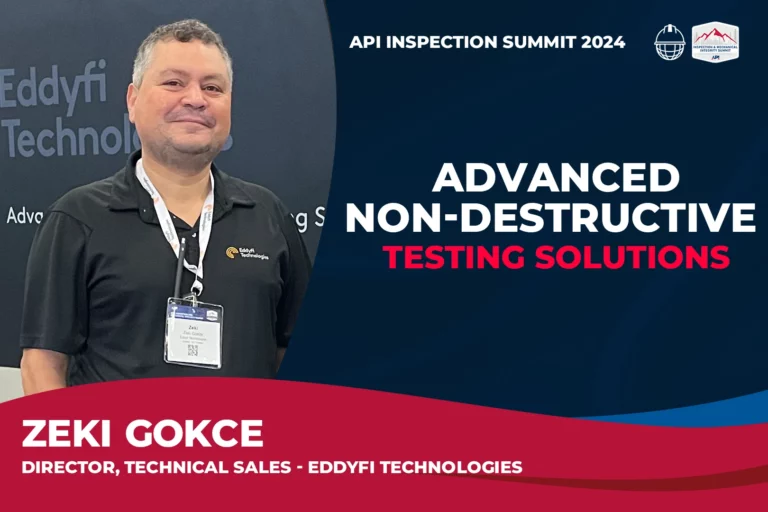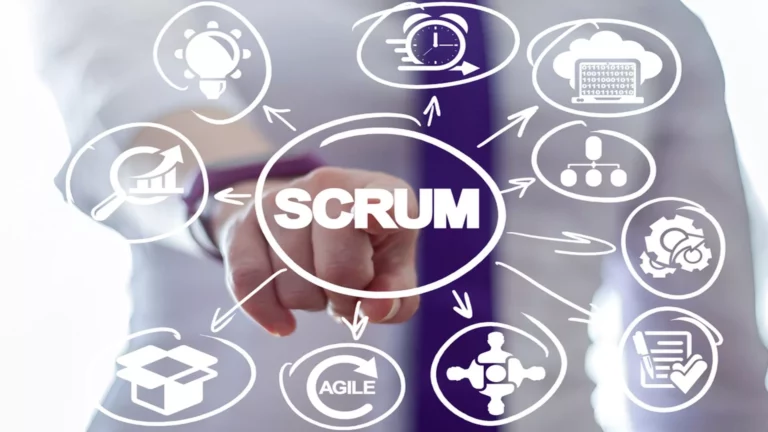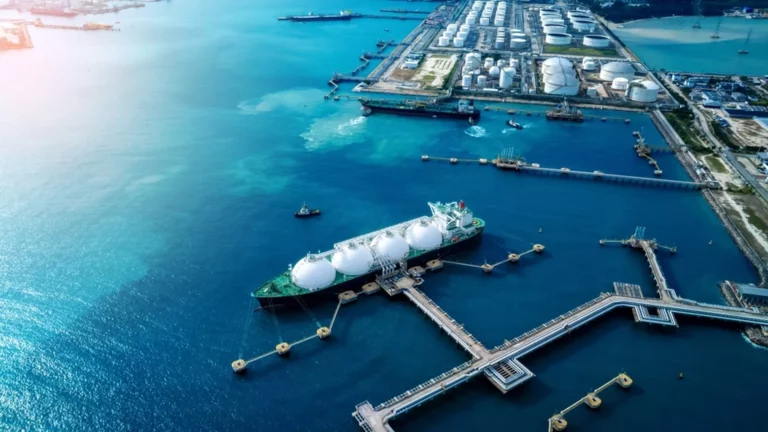Author: Ing Jesus V, October 23, 2023.
Introduction
Asset inspection is defined as one of the main methods to determine whether a product or equipment meets the technical and quality requirements for which it was manufactured. The purpose of this activity is to guarantee the safety, reliability and efficiency of the operations carried out by these assets. It is a concept implemented in industries such as oil and gas, however, it has experienced great changes thanks to the 4.0 Revolution and its technological drive.
The new era of asset inspection in the oil and gas industry is characterized by the application of advanced technologies such as artificial intelligence and IoT. As a result of this type of innovation, this industry has achieved more efficient and precise management. Reducing costs and minimizing risks to the integrity of assets.
However, just as these innovations present a wide variety of opportunities, they also include a series of challenges to consider. Throughout the article, the impact of Revolution 4.0 on asset inspection in the oil and gas industry will be analyzed. Additionally, we will examine cases of successful implementation of this innovation along with the possible benefits and considerations to be had.
Asset inspection in the oil and gas industry
This is one of the most important practices for this type of industry, since it allows critical information to be obtained. Through this process, data on structural integrity, corrosion or other sensitive factors can be obtained.
Identifying data of this magnitude can mean preventing failures and accidents. On the other hand, it additionally reduces downtime and environmental risks.
The way to inspect and evaluate these assets is through methodologies and technologies specialized in this field. Some of the best-known examples are visual inspections, vibration analysis, monitoring and Non-Destructive Testing (NDT). All these processes allow you to study and evaluate different aspects of the assets and be able to make a decision based on the information obtained.
In recent years, digital technologies have become increasingly widespread in the oil and gas industry. Advances in fields such as IoT, robotics, Big Data, Blockchain technology, sensors and artificial intelligence have come to be implemented in these methodologies and thus ensure greater efficiency and precision in the inspections developed.
This huge boost in the development of asset inspection is due to the phenomenon called “the fourth industrial revolution” or “Revolution 4.0”.
What is Revolution 4.0?
The next step of the industrial revolution is called Revolution 4.0, which is characterized by the combination of industrial processes and intelligent technologies. Its arrival poses a change in the industry and its standards of quality and competitiveness.
The 4.0 Revolution originates through the emergence of technologies such as robotics, analytics, and artificial intelligence, among others. Due to the variety of new concepts and their functionalities, it is extremely important to identify the technology that best suits the needs of the industry.
A detail to take into account is its potential, which not only impacts asset inspection processes. Its reach can be much more extensive, even disrupting the oil and gas industry completely. One of the greatest expectations regarding Revolution 4.0 is the complete change in the way inspection processes are developed. Therefore, it is possible that new capabilities and work roles may be required in the future for the optimal implementation of the technologies.
Key aspects
Intercommunication: By connecting departmental units with each other, digital networks can be developed and thus accelerate their processes. Thus helping the management and inspection of resources efficiently.
Advanced analytics: Many of the technologies used in the oil and gas industry allow decisions to be made about the planning of any type of processes. This is a useful feature to achieve greater agility in activities such as inspections and production, avoiding loss of time.
Automation: New technologies allow various tasks and processes to be carried out autonomously or semi-autonomously. In different industries, this has allowed the optimization of operations, minimization of errors and increased efficiency.
Connectivity: New technologies are not only connected to each other, but also to workers and managers. This is possible thanks to services such as the internet and the cloud. Ensuring that tasks such as resource monitoring and control can be carried out remotely and in real time.
Digitalization: It is one of the most important aspects during asset inspection management, since it allows greater operational efficiency. On the one hand, it offers an innovative improvement to manual processes and formats, and, in addition, it takes advantage of important data to anticipate possible failures in assets.
Accessibility: Digitalization and connectivity have allowed interconnection between devices and industrial assets. Providing the ability for technicians and operators to access relevant information from anywhere.
Applications of the 4.0 Revolution in asset inspection
Remote inspections: Drones equipped with cameras and sensors are one of the responses of this revolution to visual inspections. Thanks to this technological equipment, assets such as offshore platforms, oil pipelines, and refineries can be inspected. Through this innovation, high-resolution images of structures can be obtained without risking work personnel.
Remote monitoring: This important work can be carried out by installing sensors on assets. Different variables such as temperature, pressure, vibration, etc. can be recorded in real time. If there is any type of anomaly in the values, the technician or operator will be alerted, thus facilitating other procedures such as continuous monitoring and predictive maintenance.
Automated data analysis: New technologies have the ability to be trained to understand the use of advanced data analysis techniques. Thus allowing the processing of large data packets that were collected during inspections.
Simulations under virtual reality: One of the most interesting concepts that the new revolution brought is the creation of immersive experiences through virtual environments. Its purpose is to be able to provide the inspector with valuable information using a realistic perspective. Additionally, simulations serve as a form of training or environmental analysis in controlled environments.
Implementation cases
BP: It was the first company in the industry to use drones for studies of its facilities. Now it not only uses this equipment, it currently has underwater robots to inspect and perform maintenance tasks on its offshore platforms. Thanks to this, the company can carry out inspections and maintenance on its assets without endangering its personnel.
Chevron: The American oil company currently uses virtual reality in its refineries; which has helped to considerably reduce the time and money invested in maintenance processes. Virtual reality glasses used in practice simulate refinery equipment, and sensor data superimposed on the 3D model allows a technician to quickly identify the problem and provide solutions.
ExxonMobil: Has introduced a 3D immersive training platform at its research facilities. With the help of virtual reality to develop practical training techniques. This platform creates an environment that provides supervisors and engineers with deep knowledge of machinery and processes.
The simulation can recreate various real-life situations, such as unscheduled power outages, abnormal activities and emergency management, in a safe and controlled environment. In this way, participants can explore possible scenarios and develop effective response strategies.
Baker Hughes: Their way of adopting the revolution in their processes was through the implementation of smart helmets. These developed security equipment can display images, diagrams and video sequences for inspections and maintenance tasks. They also have a camera, headphones and microphone to provide guidance and assistance remotely.
Benefits of adopting Revolution 4.0 in asset inspection in the oil and gas industry
One of the characteristic benefits that come from the adoption of this new phenomenon is undoubtedly the improvement in efficiency. Since it allows the automation of processes and inspection tasks that are originally carried out manually. This allows companies to reduce waste of time and money.
Through constant monitoring and analysis of large data packets, timely detection of anomalies and problems becomes easier. Thus allowing the optimal use of preventive maintenance strategies. As a result, the condition of the asset is ensured and its useful life is optimized.
With the use of drones and robots in inspections of difficult-to-access areas, the risks to workers are reduced. These teams can carry out these activities precisely, guaranteeing good results without having to expose the integrity of personnel.
Challenges to take into account
Despite the benefits it includes, there is a great problem in the adoption of the 4.0 revolution in the oil and gas sector. And the lack of digital maturity is positioned as the main reason behind the failures in the adoption of these initiatives. According to global research, oil and gas companies have a really low level of digital maturity.
The industry is lagging behind when it comes to leveraging real-time data and insights. Furthermore, as most of the operations in this sector are cross-border and decentralized in nature, smooth and timely implementation of Revolution 4.0 initiatives becomes a challenge.
Lack of internal technical expertise, resistance to change from traditional practices, and challenges associated with industry compliance are other obstacles that companies face when adopting these new technologies in asset inspection.
Conclusions
The 4.0 Revolution in asset inspection in the oil and gas industry involves the adoption of advanced technologies and the integration of physical and digital environments to improve efficiency and decision-making in asset inspection operations.
Despite the benefits, the adoption of these technologies faces significant challenges, such as the lack of digital expertise in the industry and resistance to change. Furthermore, regulatory complexity adds additional obstacles. Therefore, if you want to achieve better results and inspection standards, it is essential to resolve these problems.
The fourth industrial revolution of oil and gas is still in an early stage of development. However, the way companies use their data, communicate and manage their assets will continue to converge, evolve and transform.
References
https://www.linkedin.com/pulse/how-leading-oil-gas-companies-adopted-virtual-reality-chrp-india/
https://www.gep.com/blog/mind/the-implementation-of-industry-4-0-in-oil-and-gas
https://www.atlascopco.com/es-mx/compressors/air-compressor-blog/industria-40-revolucion-industrial



